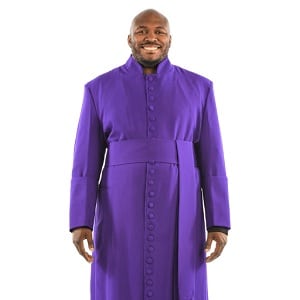The Right Time for Wearing Clergy Wear

Clergy wear is a type of clothing worn by Christian ministers, such as priests or pastors. It is also worn by some members of the clergy in other religions, such as rabbis, imams, and Buddhist monks. The style of clergy wear varies between denominations and religions, but usually includes a clerical collar, cassock, or habit.
So, when is it appropriate for a priest or pastor to wear clergy wear? Generally, clergy wear is most appropriate for religious ceremonies, such as church services, weddings, funerals, and baptisms. It is also appropriate for meeting with parishioners, counseling, or performing other ministry-related activities.
In some cases, it may also be appropriate to wear clergy wear outside of religious contexts, such as when giving a speech or attending a conference. When in doubt, it is best to err on the side of caution and dress more formally.
During Religious Ceremonies
Clergy wear is attire worn by religious officials during religious ceremonies. It is a visual marker that identifies the person as a member of the clergy. Clergy wear also has a symbolic meaning and is often seen as a sign of respect.
While there is no set standard for clergy wear, it is typically conservative and subdued in color. Common items of clergy wear include robes, stoles, cassocks, and collars.
Clergy wear is also not always the same. It varies depending on the type of event or service. A funeral will have a different dress code than that of a baptism or a wedding. The context of the event will also dictate the type of clothing worn by clergy.
For example, a funeral held in a church will require more formal attire than a funeral held at a graveside. When it comes to funerals, clergy typically wear a cassock, surplice, and stole. It gives the ceremony and the officiant a more serious tone and appearance..
For baptisms and weddings, the clothing worn by clergy is typically more festive and celebratory.
Doing Ministry and Other Church-related Activities
Clergy wear is also worn when meeting or visiting parishioners or doing other church-related activities. The type of clothing worn depends on the denomination, but it is typically a clerical collar, or a shirt with a collar.
But can clergy wear civilian clothing when they are doing activities outside the Church?
Clergy are allowed to wear civilian clothing when doing ministry or church related activities, as long as the clothing is appropriate and modest. This is generally considered to be clothing that is not revealing, tight-fitting, or otherwise inappropriate for a church setting.
Clergy may also wear civilian clothing when participating in community events or when meeting with church members outside of church.
During Seminars
Clergy wear is the dress code for religious leaders when attending religious seminars and conferences. The style of clothing worn by clergy members varies depending on their denomination, but generally includes a clerical collar or robe.
One of the most visible aspects of religious leaders is the distinctive clothing they wear. While the styles and colors of clerical garments vary depending on the religion, they all serve the same purpose: to identify the wearer as a religious leader.
There are many reasons why religious leaders might choose to wear clerical clothing. For one, it can be seen as a sign of respect. When a religious leader is wearing clerical clothing during a meeting, they are indicating that they are taking the seminar seriously and are representing their religion in a formal setting.
Clerical clothing can be seen as a badge of honor, as it shows that the person wearing it has been ordained into their religious leadership role. But ultimately, whether or not to wear clerical clothing is a personal choice for each religious leader.
For More Information about Women’s Apostle Vestments and Bishop Attire For Ordination Please Visit: divinityclergywear.
